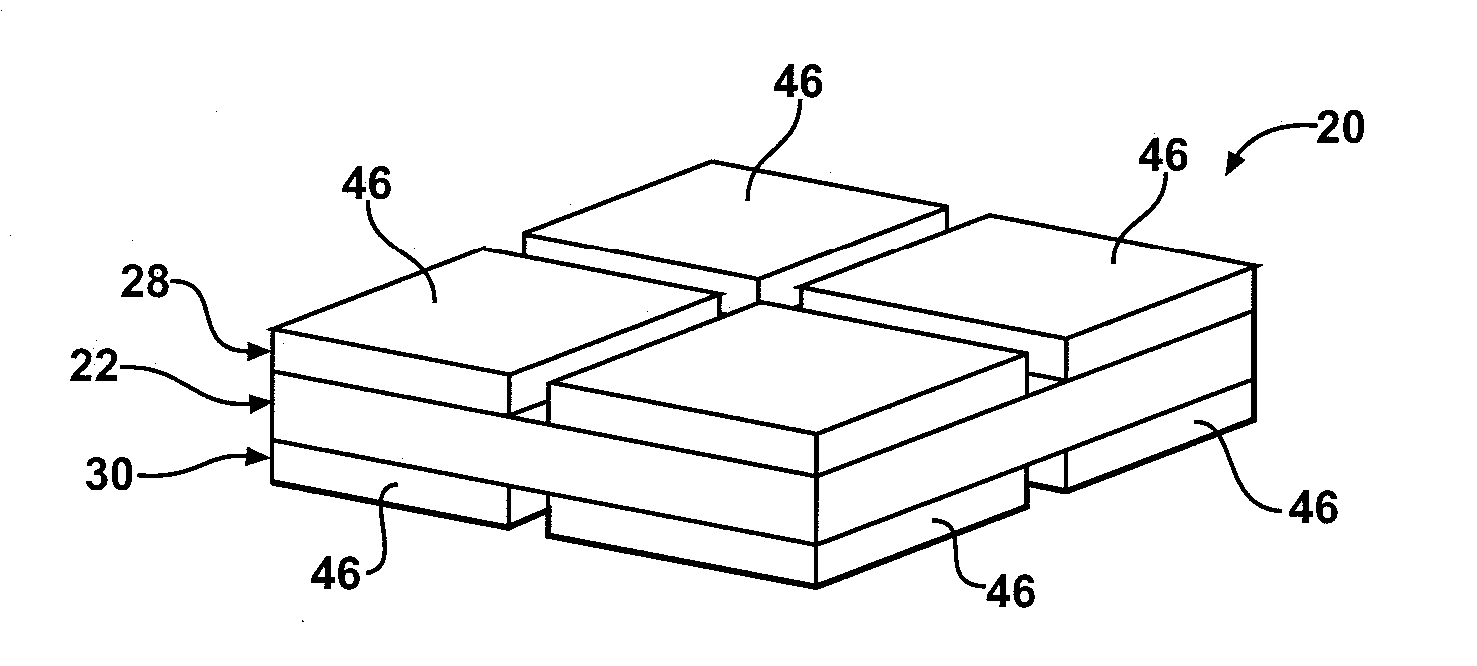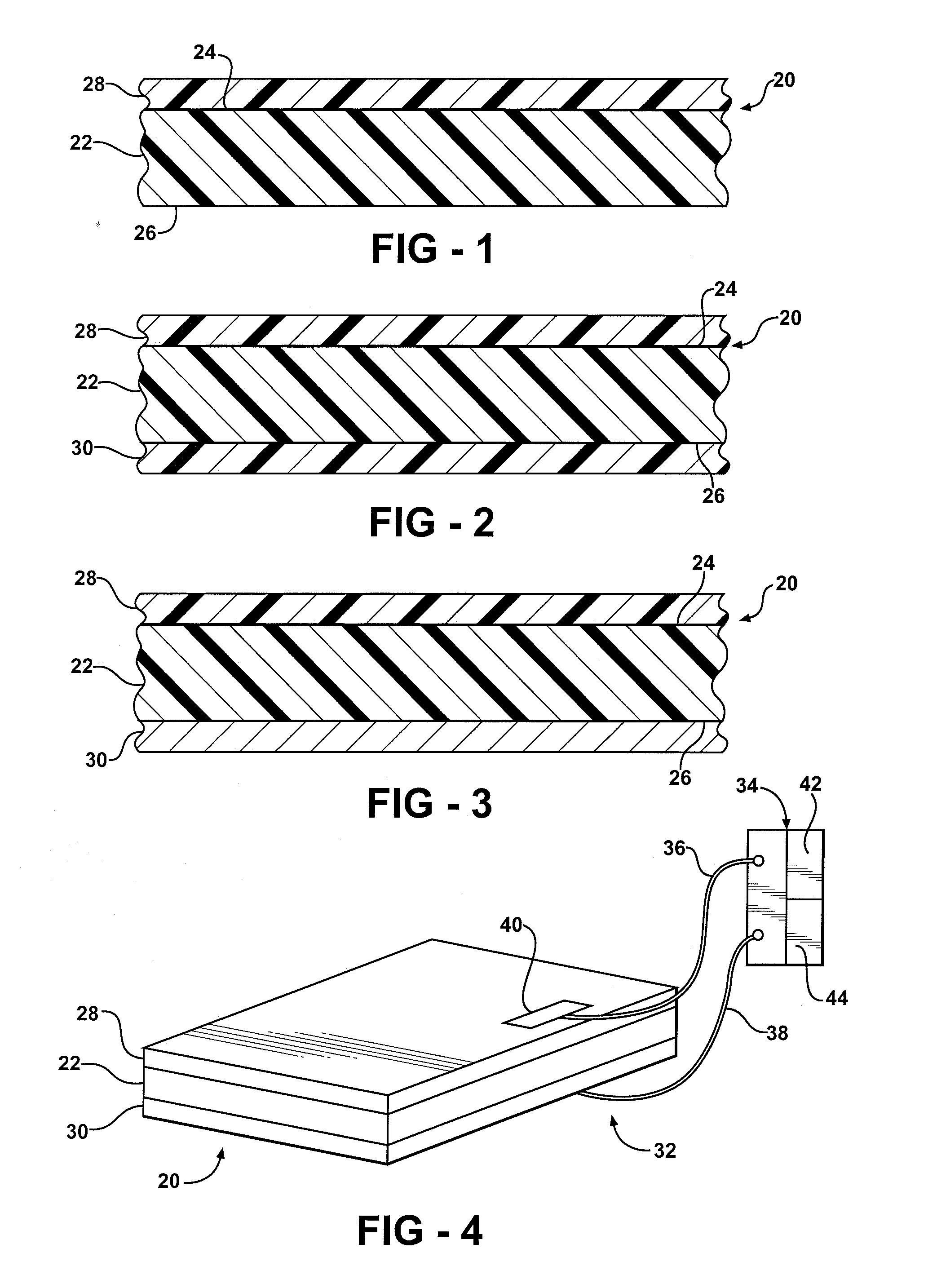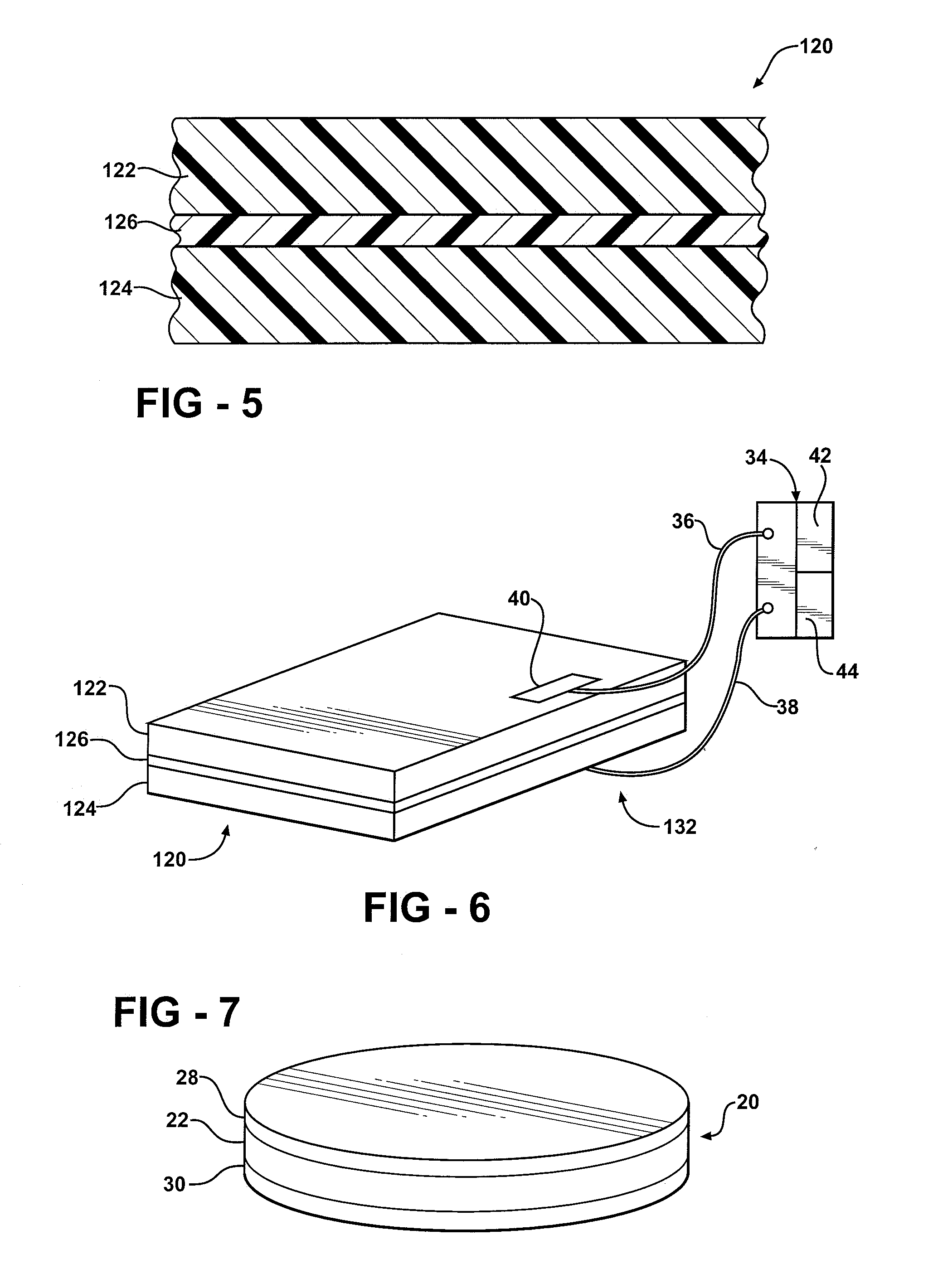Piezoelectric polymer composite article and system
a composite article and piezoelectric technology, applied in the field of piezoelectric polymer composite articles and systems, can solve the problems of reducing the flexibility of the article, so as to achieve high resistance to oxidation and improve cost efficiency.
- Summary
- Abstract
- Description
- Claims
- Application Information
AI Technical Summary
Benefits of technology
Problems solved by technology
Method used
Image
Examples
Embodiment Construction
[0027] Referring to the Figures, wherein like numerals indicate corresponding parts throughout the several views, a first composite article is generally shown at 20.
[0028] Referring to FIG. 1, the first composite article 20 includes a piezoelectric layer 22 having a piezoelectric property or piezoelectric properties. As is well known to those skilled in the art, a substance with piezoelectric properties generates an electrical voltage in response to applied mechanical strain or stress. Likewise, the substance with piezoelectric properties will mechanically deform in response to an applied electric field. A substance with piezoelectric properties is also referred to by those skilled in the art as having ferroelectric properties.
[0029] Preferably, the piezoelectric layer 22 is formed from a polymer having piezoelectric properties. Most preferably, the polymer is polyvinylidine difluoride (PVDF). One manufacturing method for increasing the piezoelectric properties of a PVDF material ...
PUM
| Property | Measurement | Unit |
|---|---|---|
| frequency | aaaaa | aaaaa |
| piezoelectric property | aaaaa | aaaaa |
| conductive | aaaaa | aaaaa |
Abstract
Description
Claims
Application Information
 Login to View More
Login to View More - R&D
- Intellectual Property
- Life Sciences
- Materials
- Tech Scout
- Unparalleled Data Quality
- Higher Quality Content
- 60% Fewer Hallucinations
Browse by: Latest US Patents, China's latest patents, Technical Efficacy Thesaurus, Application Domain, Technology Topic, Popular Technical Reports.
© 2025 PatSnap. All rights reserved.Legal|Privacy policy|Modern Slavery Act Transparency Statement|Sitemap|About US| Contact US: help@patsnap.com



